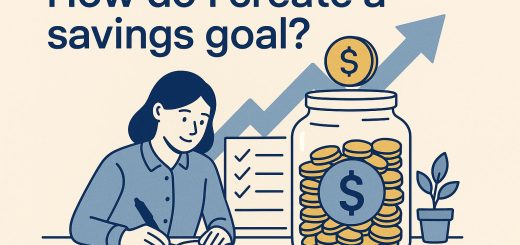How do interest rates affect my investments?
Understanding Interest Rates and Investments
Interest rates play a crucial role in the financial world, influencing various aspects of the economy, including investments. Their impact can be significant, affecting both the valuation and performance of investment portfolios. Understanding how interest rates work and their effects is essential for making informed investment decisions.
Interest Rate Fundamentals
Interest rates are the cost of borrowing money, typically expressed as a percentage of the principal. Central banks, like the Federal Reserve in the United States, set benchmark interest rates which influence the rates offered by banks and financial institutions. These rates affect everything from mortgages to personal loans and, significantly, investment returns.
Importance of Understanding Interest Rates
Interest rates are a fundamental part of the economy, serving as a tool for central banks to control monetary policy, including inflation and unemployment rates. By adjusting interest rates, central banks aim to either encourage spending and investment by lowering rates or to control inflation by increasing them. Therefore, understanding interest rates can provide investors with insights into broader economic conditions and help them anticipate changes in investment environments.
Interest Rates and Bond Investments
Bonds are fixed-income securities that are highly sensitive to interest rate changes. As interest rates rise, the prices of existing bonds typically fall. This inverse relationship occurs because new bonds are issued with higher yields, making existing, lower-yield bonds less attractive.
Impact on Bond Yields: When rates increase, the yield on existing bonds becomes less competitive, reducing their market value. Conversely, a decrease in rates makes existing bonds more valuable due to their relatively higher yields.
Portfolio Management: Investors need to consider their bond portfolio duration when interest rates shift. Long-duration bonds are more sensitive to rate changes than short-duration ones. This means that investors should evaluate their tolerance for interest rate risk and possibly adjust the duration of their bond holdings accordingly.
Interest Rates and Stock Investments
Interest rates influence equities, but the relationship is not as straightforward as with bonds. Higher interest rates can have mixed effects:
Cost of Borrowing for Companies: When rates rise, borrowing costs for companies can increase, potentially reducing corporate profits and investment. Moreover, companies with significant debt may face higher interest expenses, which can erode profitability and discourage expansion.
Investor Behavior: Higher interest rates often lead investors to shift preferences from stocks to fixed-income investments like bonds, seeking safer and potentially higher-yield returns. As rates rise, fixed-income products may become more attractive compared to stocks, affecting demand and subsequently stock prices.
Economic Growth: Interest rate changes can signal shifts in economic growth expectations. Higher rates might indicate attempts to curb inflation, while lower rates can suggest efforts to stimulate growth. This relationship is complex and can also be influenced by other factors such as fiscal policy, global economic conditions, and investor sentiment.
Interest Rates and Real Estate Investments
Real estate investments are also affected by interest rate fluctuations. Changes can influence both the cost of financing for property purchases and the broader economic environment that affects property values and rental income.
Mortgage Rates: Rising interest rates usually lead to higher mortgage rates, which can dampen property demand and slow housing market growth. For real estate investors, this can affect rental incomes and property valuations. It becomes crucial for investors to assess the financing landscape before making investment decisions in real estate.
Economic Indicators: Interest rate trends can serve as indicators of economic health, impacting broader real estate market dynamics. By understanding these indicators, investors can better navigate the market’s complexities and align their strategies with prevailing economic conditions.
Making Informed Investment Decisions
Given the complexities of interest rates and their wide-reaching effects, it’s vital for investors to stay informed. Following central bank announcements and economic indicators can provide critical insights into potential interest rate movements.
Diversification: Having a diversified portfolio can mitigate the risks associated with interest rate volatility. A mix of equities, bonds, and other asset classes can help balance exposure. Investors should evaluate their portfolio periodically and adjust their asset allocation to align with their risk tolerance and investment objectives.
Consult Financial Advisors: Seeking advice from financial advisors can be beneficial. They can provide tailored strategies based on current interest rate trends and individual risk tolerance. Financial advisors can help investors assess their financial goals and develop strategies to achieve them amid changing economic conditions.
Conclusion
The intricate relationship between interest rates and investments underscores the importance of staying informed about economic trends. Understanding how interest rates impact various asset classes, from bonds to stocks and real estate, enables investors to make judicious decisions that align with their financial goals. By navigating the complexities of interest rates with careful analysis and strategic planning, investors can better position themselves to achieve long-term success in the financial markets. For further reading on how economic factors like interest rates can influence your investments, consider checking out reliable financial news websites or official central bank communications.
This article was last updated on: June 18, 2025








